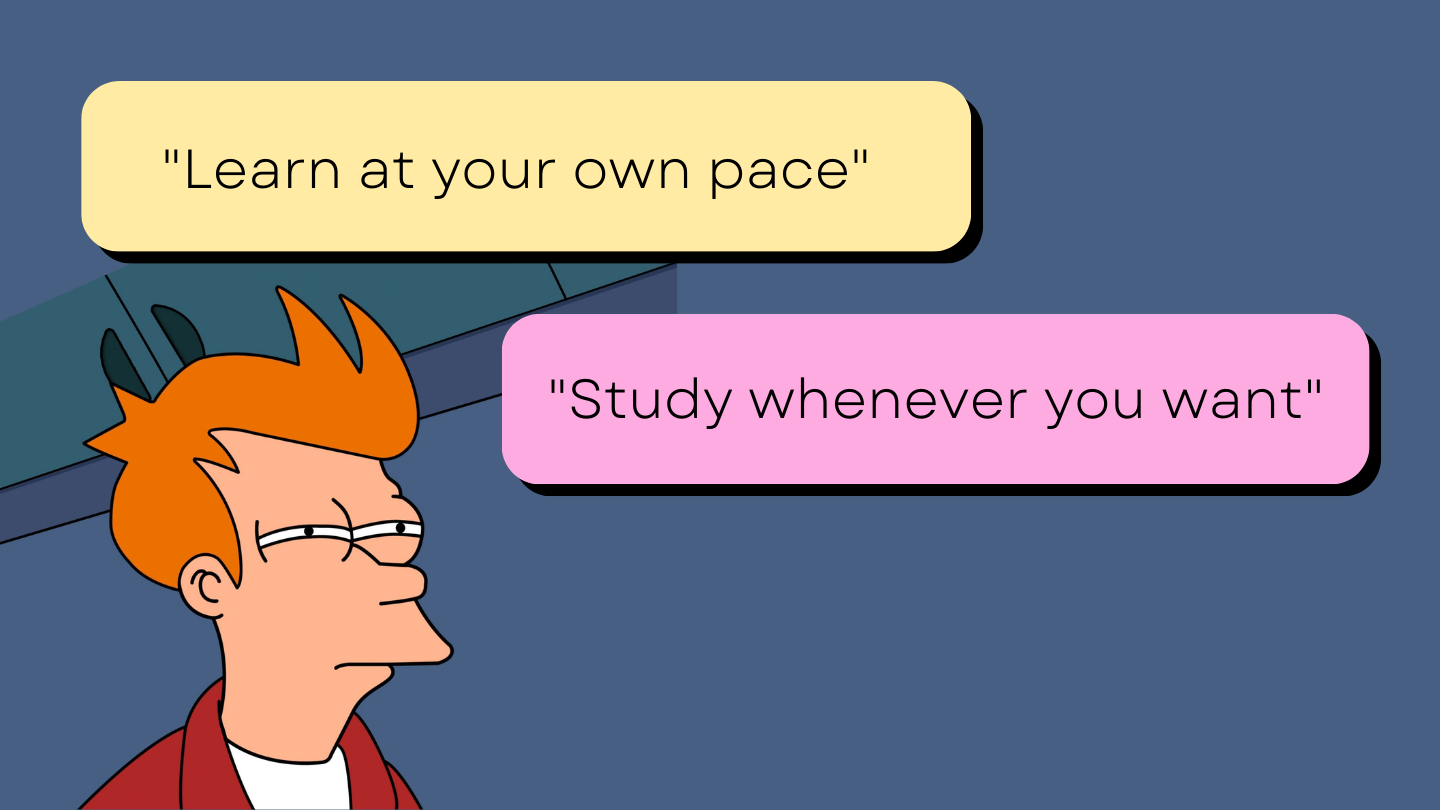
The Fantasy of "Learn at Your Own Pace"
"Flexibility" is a magic word in online education. It's what platforms sell, what students seek, and what institutions promise. "Learn at your own pace," "Study whenever you want," "Adapt your education to your life." Sounds good.
But what if flexibility was actually the Achilles' heel of online education?
At Circles, when we started, we believed in total flexibility. Forming a study group was optional for students. And once the group was formed, meeting was optional. Flexibility upon flexibility. The result was an alarmingly low level of commitment and participation, with attendance and completion rates well below our initial expectations. It turns out that flexibility can be counterproductive.
In the world of online education, we've been selling a fantasy: the idea that you can learn anything, anytime, without commitment. But real learning requires commitment and structure.
Think about the world's most prestigious educational programs. They're not flexible at all. Harvard, MIT, Stanford - they all have fixed start dates, mandatory class schedules, strict deadlines. Even their online programs, like MIT Professional Education courses or the more expensive courses from extension schools like Catholic University and University of Chile, maintain this structure.

They do it for two reasons. First, because logistically it's necessary for the business model to be viable. Courses must group a significant number of students at specific times to maximize teacher time utilization and justify associated costs. A completely flexible model would require virtually unlimited teaching resources, which isn't economically sustainable. And second–more important for our analysis–is that schedules work. When students are given a schedule, they actually show up to class. People need structure. Structure makes commitment possible.
At Circles, we had to unlearn what we thought we knew about flexibility in remote education. Our first step was to make group meetings mandatory. At this point we didn't change anything in the app, just an instruction in the first class: "You must schedule recurring meetings." Engagement improved, but we still faced two problems.
The first is that someone in the group had to take the initiative to propose the meeting. Turns out being that person is difficult. It's like being the first person to start dancing at a party. Everyone is waiting for someone else to take the first step.
The second problem arose from how groups approached scheduling their meetings. They tended to schedule each session individually, as if it were a unique event, asking themselves: "What time can we meet next week?" While they managed to meet, this approach created an endless cycle of coordination. Each week, at the end of their session, they faced again the challenge of finding a common time for the next meeting, thus perpetuating the coordination problem.
The solution came when we changed the user flow in our app. Instead of waiting for someone to propose a meeting, the app itself asks: "What day and time will you meet weekly?" Suddenly, no one has to be "first." Everyone is simply answering a question. And they're no longer looking for a time that works for one day. They put it in the calendar at a fixed time, same day same time every week. They don't have to face the coordination problem again and again.
As a result, nearly 100% of groups now schedule their meeting and the number of students who complete our courses is very high. Recently in a 2-month course with 1,300 students we had an 89% completion rate. (Self-paced courses on platforms like Coursera typically have retention rates of 5% to 10%).
We're not the only platform where it's possible to generate a schedule. On Coursera (or maybe it was Udemy) there's a tool that helps you schedule when you're going to take the course. But at Circles, the same question works much better. The reason is the power of social commitment.
This is true flexibility: not the absence of structure, but the ability to create your own structure within a defined framework.
When you schedule a meeting with other people, the probability that you'll show up is much higher than when you schedule a commitment with yourself. It's the difference between saying "I'll meet with my study partners at 7 pm" and "I'll study on my own at 7 pm." The first commitment is much harder to break.
Think about how many times you've postponed going to the gym, even when you had it scheduled in your calendar. Now, think about how many times you've missed a meeting with friends or colleagues. The social bond is a powerful motivator and a strong accountability mechanism.
At Circles, we leverage this phenomenon. You're not just committed to your own learning, but to that of your peers. This social bond becomes the glue that keeps students engaged and motivated, even when the content gets difficult or life gets in the way.
But here's the irony: Circles now has "mandatory" schedules, but with unprecedented flexibility. Each circle meets on the day and time they define as a group. When we work with school-level teachers, they meet during their non-teaching curricular hours. Some on Monday mornings, others on Wednesday afternoons. Higher education professors, like those from INACAP, typically meet on weekends.
This is true flexibility: not the absence of structure, but the ability to create your own structure within a defined framework. The key is providing the tools and support for students to design a study plan that is challenging but achievable, thus fostering self-discipline and responsibility without sacrificing the flexibility that makes online education attractive.
In the world of online education, we've been selling a fantasy: the idea that you can learn anything, anytime, without commitment. But real learning requires commitment and structure.
The next time you see an online course that promises total flexibility, ask yourself: Is that really what I need to learn? Or do I need an environment that challenges me, supports me, and holds me accountable?